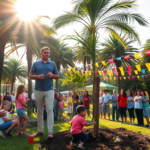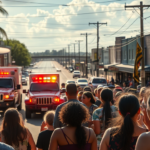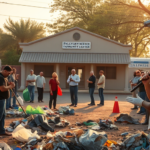Dr. Pisharodi’s Bold Vision for Pandemic Prevention Sparks Community Dialogue in the Rio Grande Valley
In a bid to prevent a future pandemic, Dr. Madhavan A. Pisharodi, a Brownsville-based neurosurgeon, delves into innovative solutions in his new book, “Corona: Be Not Proud.” While his scientific proposals have garnered praise from individual readers, they struggle to gain traction on a national scale. Despite these challenges, Pisharodi’s efforts could hold significant implications for the Rio Grande Valley (RGV), sparking critical conversations about public health and infrastructure in South Texas.
Understanding Pisharodi’s Perspective
Dr. Pisharodi’s book argues that the severity of the COVID-19 pandemic was exacerbated by factors such as airborne infections, asymptomatic spreaders, and current air conditioning systems. His focus centers on the need for enhanced ventilation to combat the spread of viruses in confined spaces. “We learned the hard way how inadequate ventilation systems can exacerbate the spread of viruses,” explains Pisharodi during a recent interview.
He advocates for a “self-cleaning airflow system” that involves distinct air inlet and outlet levels, requiring air to travel across entire rooms. Such innovations aim to reduce virus survival rates by improving air circulation and maintaining higher humidity levels, which are less conducive to airborne pathogens.
Potential Impacts on Rio Grande Valley
Implementing Dr. Pisharodi’s proposals could notably benefit Valley residents. South Texas’ climate often calls for prolonged use of air conditioning, a factor Pisharodi highlights as contributing to disease spread. By integrating improved ventilation systems, local buildings could become healthier spaces, minimizing future airborne disease risks.
“Any initiative that enhances public health also supports our local economy,” notes John Ramirez, an RGV public health official. “Dr. Pisharodi’s advocacy for better infrastructure aligns with ongoing efforts in our community to prioritize health and well-being.”
Navigating Recognition and Implementation
Despite the potential benefits, Pisharodi faces challenges in gaining widespread recognition and action for his work. Efforts to engage national medical agencies have been reportedly stymied by technical hurdles and reduced to commercial rhetoric. “I’m not selling a product; this is about saving lives,” Pisharodi expresses, voicing frustration at being perceived as a salesman rather than a proponent of scientific advancements.
The financial implications of Pisharodi’s proposals also foster debate. While some view the suggested changes as prudent investments in long-term health, others consider them financially burdensome. “The upfront costs may seem high, but we need to consider the broader economic and human benefits,” argues Dr. Teresa Gonzalez, an economics professor at the University of Texas Rio Grande Valley.
Connecting to Past Issues
Infrastructure and public health challenges have long been pressing issues in the RGV. The Valley has previously grappled with diseases outbreaks, such as dengue fever, which have underscored the need for preventive measures. Implementing ventilation improvements could serve as a proactive step, fostering resilience against future pandemics.
Local historian Maria Esparza points out, “History shows us that pandemics have often been turning points for adopting critical infrastructure improvements. The innovations we embrace today may shape our community’s health and prosperity for decades to come.”
Future Implications for the Community
Looking ahead, the outcome of Pisharodi’s advocacy may influence policy decisions in RGV and beyond. Should local governments consider his ideas, they could establish precedents for a more robust public health strategy across South Texas. However, achieving these reforms will require collaboration between scientific communities, policymakers, and residents.
Engagement from Valley residents and officials is pivotal. Dr. Pisharodi plans to host public forums and workshops, inviting community participation. By fostering open dialogue, he hopes to align public understanding with scientific innovation, ultimately achieving a shared vision for a healthier RGV.
Balancing Perspectives
Both support and skepticism surround Pisharodi’s proposals. While his proactive stance on prevention is lauded, some question the financial viability and feasibility of widespread implementation. “Every argument has merit,” states civic leader Daniel Rios. “Balance is crucial; we must ensure accessible health solutions without overextending financial resources.”
To bridge these gaps, transparent discussions and continued education about the proposals’ benefits and logistics are essential. Community input can help tailor solutions to local needs, ensuring initiatives are both impactful and sustainable.
Local Resources and Contact Information
For RGV residents interested in learning more or contributing to discussions on these proposals, Dr. Pisharodi encourages reaching out through local health departments or attending scheduled forums. Contact details and event schedules are available on community boards and online platforms, facilitating information exchange.
As dialogue unfolds, Dr. Pisharodi’s work underscores a broader narrative in the RGV: a community committed to innovation and resilience, striving for a future where public health infrastructure meets the challenges of tomorrow’s world. Through collaboration and investment, the Valley aims to emerge not only prepared but thriving in the face of potential pandemics.







